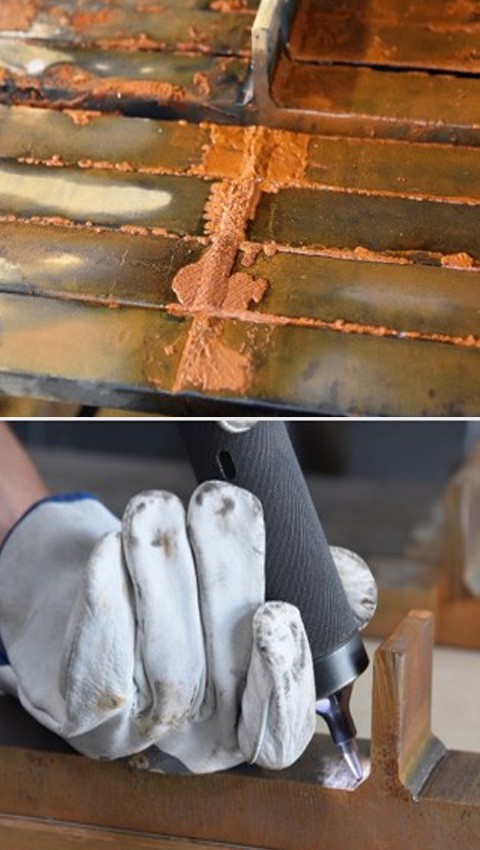HFH Corrosion
Increasing the fatigue strength of offshore wind turbines by weld post-treatment considering the influence of corrosion.
The increase in global energy demand combined with the constant need for sustainable development requires the continuous improvement of environmentally friendly energy sources. Extending service life while reducing construction costs is, as with all structures, a major challenge for the structural engineer. As with most steel structures, the welds, including those of offshore wind turbines (WTGs), are the weak link in terms of fatigue strength. The use of the high-frequency hammering (HFH) process in the post-treatment of welds can significantly increase the service life of steel structures. The effectiveness of the process under non-corrosive conditions has been demonstrated in numerous research projects to date. Application of the process to wind turbines also appears promising, since significant increases in the corrosion life of steel structures have already been achieved with similar processes that are generally not as effective as HFH. The lack of existing guidelines and the small number of experimental results on the application of HFH in corrosive environments currently limits the application of the method in practice. The aim of the project is to investigate and qualify corrosion effects on the fatigue strength of post-treated welds and, in particular, on the effectiveness of HFH in corrosive environments. Based on this, design concepts are developed that lead to more economical steel structures.
Even in corrosive environments, HFH post-treatment causes a significant increase in fatigue strength compared to the untreated reference detail. Compared to the design approach for "welded" specimens without corrosion influence, the fatigue strength of butt welds can be increased from notch case category 90 to 160 based on the present test results. The notch case category of "as welded" transverse stiffeners without corrosion increases from 80 to 125.
| Research field: | Steel Construction and Welding Technology |
| Responsibel: | Prof. Dr.-Ing. Imke Engelhardt |
| M. Eng. Joscha Weinert | |
| Funding: | BMWI, AF, IGF (DVS) |
| IGF project no: 18.457 N / DVS DVS no | |
| Duration: | 01.11.2014 to 31.10.2017 |
| Project partner: | Karlsruher Institut for Technology, Industrial Partner |
